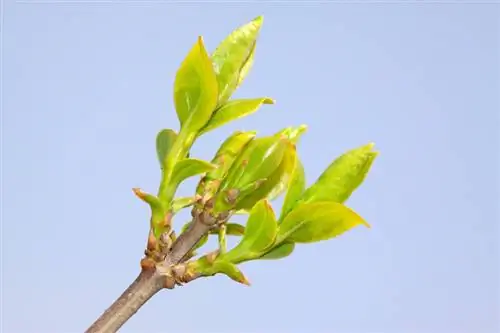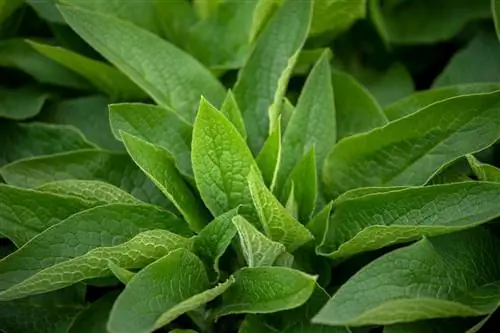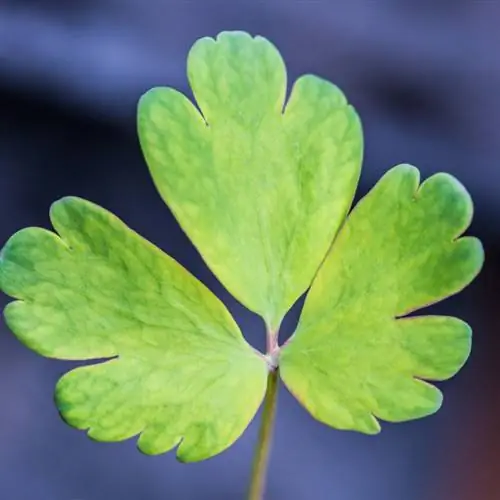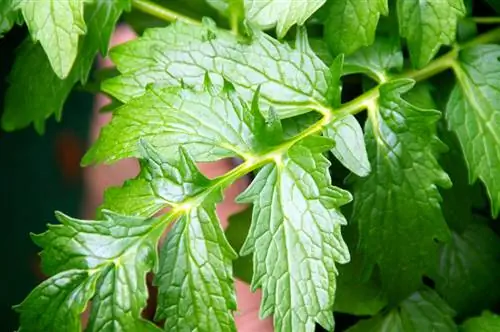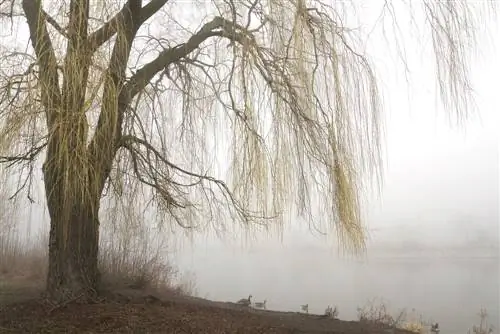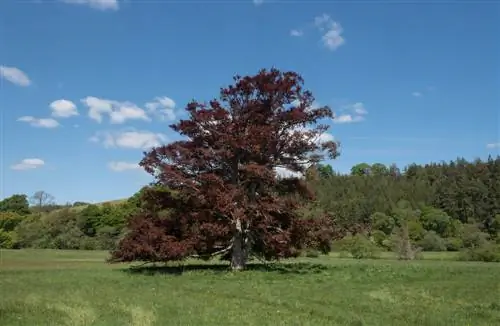- Author admin [email protected].
- Public 2023-12-16 16:46.
- Last modified 2025-01-23 11:20.
Forsythia, also known as Goldilocks, is primarily grown as a spring bloomer in the garden because of its many flowers. The many green leaves provide good privacy protection for the rest of the gardening year. That's why the bushes are often planted as a forsythia hedge.
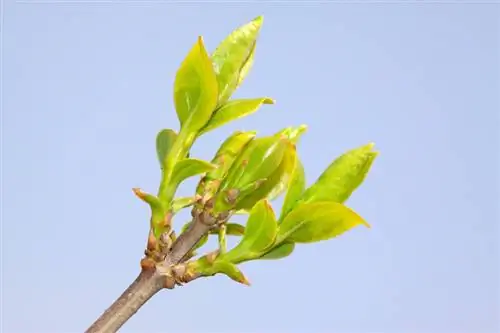
What do forsythia leaves look like?
Forsythia leaves are uniformly green, elongated to oval, jagged at the edge and up to six centimeters long. They are arranged oppositely and develop after the flowering of the forsythia, which is valued as a spring bloomer.
The characteristics of the forsythia leaf
- Uniform green
- With small stem
- Elongated to oval shape
- Jagged at the edge
- Arranged oppositely
- Up to six centimeters long
Forsythia are summer-green ornamental shrubs
In autumn the leaves turn yellow or brown and then fall off. Since forsythia leaves are almost never attacked by pests, they can be used very well as mulching material and winter protection in the garden.
If it doesn't bother you, you shouldn't rake away the fallen leaves, but leave them under the bush. They form good soil protection and provide the earth with additional nutrients.
First the flower, then the leaf
Forsythia has a special feature when it comes to the development of its leaves. The leaves only develop after the flowers. That's why the yellow flowers of the forsythia look so bright.
Only when the flowering period is over do the new leaves appear on the buds on which flowers previously grew.
Foliar diseases of forsythia
Basically, forsythia is very robust and resistant to diseases and pests. If the location is too wet, fungi will spread, causing the leaves to wilt and fall off prematurely.
If the leaves are punctured, there were most likely bugs in the work. The harmless plant suckers prefer the juice of the leaves that have not yet been unfolded. They suck out the leaves and leave unsightly holes on the leaf.
But this is just a cosmetic flaw. The holes in the leaves do not harm the shrub. There is no prevention.
Floppy leaves
If the leaves of the forsythia hang limply, the forsythia is too dry. In this case, you should water the shrub or forsythia hedge. A layer of mulch prevents the soil from drying out.
Tips & Tricks
If you want to grow a forsythia as a bonsai, the leaves play an important role. The tree is constantly cut, but flower buds are spared so that new leaves can develop.

